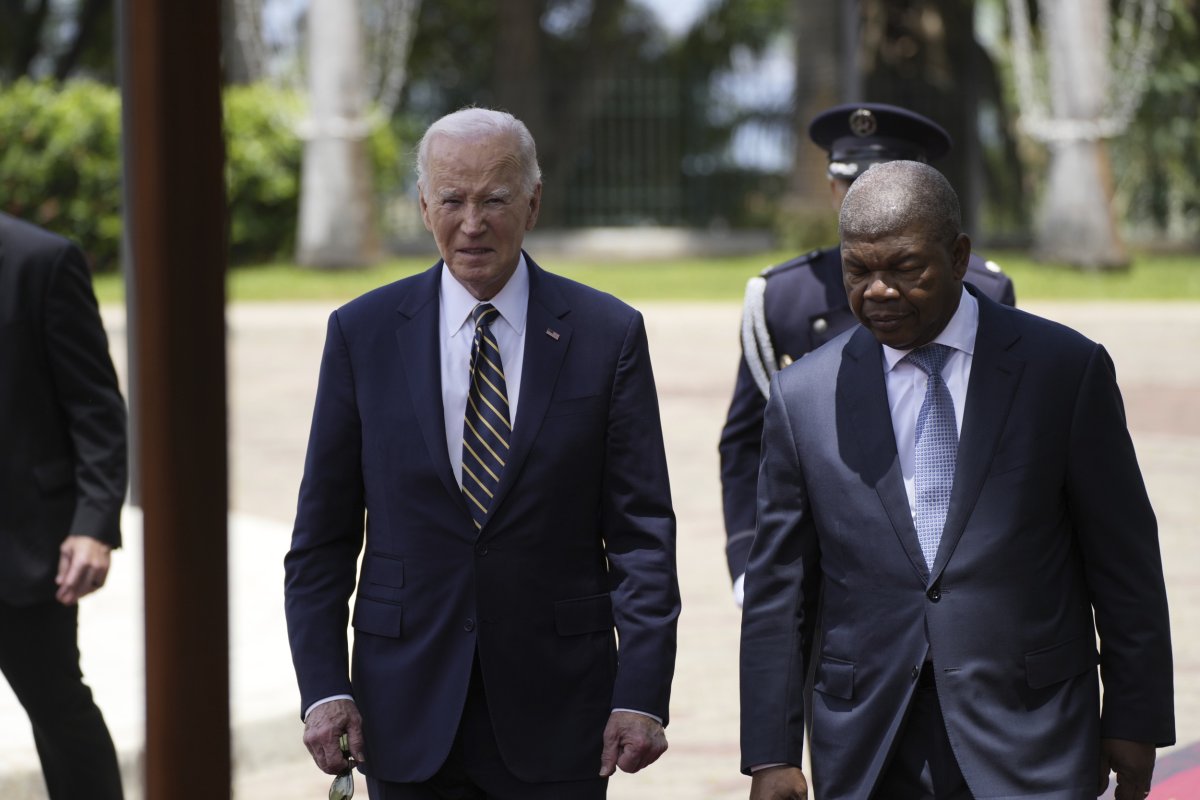President Joe Biden, known for his long-standing affection for trains, used the final day of his visit to Angola to spotlight the region’s U.S.-backed rail project.
Once completed, the Lobito Railway Corridor will transport materials from mineral-rich mining epicentres in Africa to the West.
It will contain 800 miles of train lines spanning Zambia, Congo, and Angola.
The project––which has received $600 million in U.S. investment––forms part of a broader initiative to bolster American influence in Africa and compete with China’s substantial infrastructure investments in the region.
Known as “Amtrak Joe” for his decades-long train commute to Washington D.C. as a senator, Biden has often spoken about railways as a catalyst for development.
“I’m probably the most pro-rail guy in America,” he said during a speech with leaders at Angola’s Lobito Port.

AP Photo/Ben Curtis
What is the Lobito Corridor?
The Lobito Corridor is part of a partnership involving the U.S., the European Union, African banks and other G7 nations.
It is set to connect South and Central Africa’s Atlantic coast to its eastern side through a revamped rail network.
Areas abundant in cobalt, copper and lithium––critical for technologies like electric vehicles and clean energy––usually take about 45 days to get from eastern Congo or Zambia to the market and usually involves going by truck to South Africa.
With this network the same journey will be made in 40-50 hours.
Biden’s emphasis on this project comes as trade tensions with China intensify.
China has heavily invested in African infrastructure for over a decade, including a rival rail line linking Zambia to Tanzania’s east coast, the Belt and Road Initiative.
Over 72 percent of all cobalt and copper extractions in the Democratic Republic of Congo are at the behest of their operations.

AP Photo/Ben Curtis
Timing of Biden’s Africa Visit Questioned
During his visit, Biden toured the Lobito port alongside Angolan President João Lourenço and Angolan Minister of Transport Ricardo Daniel Sandao, among others.
The tardiness of the Biden’s first Presidential trip to Africa has faced some criticism. After several delays––the last due to Hurricane Milton––he finds himself in the continent just months away from transferring power to his successor, President-elect Donald Trump.
Trump broke tradition in failing to visit the continent at all during his first term. Former President Barack Obama‘s two terms saw him make four visits across seven countries.
Michelle Gavin, a former U.S. former adviser on Africa to Obama, said she doubts Biden’s time there will be significant enough to represent an “inflection point.”
“It is not just about trying to blunt China, but trying to imagine, OK, what does it look like if we actually were to show up in a more serious way?” she said. “It’s one project. It’s one good idea. And I’m very glad we’re doing it. It’s not enough.”

AP Photo/Ben Curtis
China’s Infrastructure Dominance in Africa
A senior U.S. administration official, speaking anonymously, said the Lobito Corridor symbolizes the U.S. approach to countering China’s influence—by fostering investment opportunities that benefit local economies, rather than plastering over problems with aid.
China, meanwhile, remains a formidable competitor in African expenditure.
In September, it announced a $1 billion deal to renovate the long-neglected TAZARA railway line linking Zambia to Tanzania’s Dar es Salaam port.
Analysts see this as a direct response to the West’s coalition of support.
The Lobito Corridor project is expected to take years to complete, requiring sustained political and financial commitment across administrations.
While much of the work will continue under Biden’s successor, the initiative has garnered bipartisan support in Congress for its focus on long-term African partnerships.
Until then, Biden pledged for that the U.S. will continue to be “all in on Africa.”
This article includes reporting from The Associated Press


























